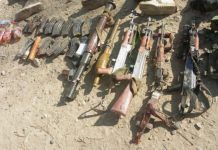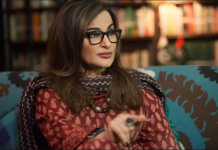NEW DELHI: Sometimes Arshad Hussain disappears. He will be sitting on the bed, watching relatives, neighbors and journalists pour into his house when suddenly scenes of his dead son wash over him. “I find myself on the street, staring at the concrete path where my son bled to death, he said quietly, leaning against the exposed brick walls of his house in Nehtaur, a small north Indian town about 190 kilometres from New Delhi. His 20-year-old son, Anas Ahmad, was among 16 Muslims killed across the state of Uttar Pradesh on Dec 20, the deadliest day in unrelenting violence that has engulfed India for almost a month. The victims included an 8-year-old boy. Tens of thousands of people have taken to the streets to oppose a new law that grants a path to citizenship for immigrants of every religion except Islam. Many say the law, passed by Prime Minister Narendra Modi’s Hindunationalist government, discriminates against Muslims and undermines the country’s secular foundations. The government, saying the protests are orchestrated by its opponents, has responded by banning gatherings of more than four people, partially shutting down the internet to make it more difficult to organise and detaining activists. Police have used baton charges, tear gas and sometimes live ammunition against protesters, leaving at least 23 dead nationwide. The crackdown has been the harshest in the heartland state of Uttar Pradesh, where Muslims comprise 20 per cent of the population of 200 million. Relatives of eight of the 16 people who died on Dec 20 told the AP that their family members had been killed by police fire. Police deny using guns, but a smart phone video seen by the AP shows an officer firing at protesters in Meerut and residents of the city said they saw police firing weapons that day. Five people died in Meerut, the highest toll anywhere that day. The city, about 80 kilometres northeast of New Delhi, was teeming with people marching toward a market intersection to protest after Friday prayers, residents said. At first, people emerged from the city’s narrow lanes in twos and threes. A crowd of 30 to 40 formed. Half an hour later, the number had risen to the hundreds. By the time police arrived in protective gear, the gathering had become a buzzing congregation. Soon officers resorted to baton charge and tear gas. Several residents said this was followed by gunfire, forcing people to scamper for safety. Hours later, the town convulsed in tragic news: Five men had died of gunshot wounds. Mohammad Naseem said he was standing beside his 45-year-old friend, Zaheer Ahmed, when a hail of bullets, which he said came from the police side, tore over their heads. Naseem said his friend was sitting next to a shop front, puffing on a cigarette, when he saw him fall sideways. When the sound of bullets stopped, I went closer to check on him and he was dead, he said. Police said they only used non-lethal weapons to disperse the crowd. “We didn’t even order firing in many areas,” said the states top police official, Om Prakash Singh. “Protesters used illegal guns to fire at the police,” he said, “and the victims were caught in the crossfire”. Residents in Meerut and Nehtaur say the deaths were followed by a police crackdown, deepening fear among Muslims. Others offered similar accounts elsewhere in the state, alleging police killings and vandalism. The police deny the charges. CCTV surveillance video and mobile phone footage from Meerut shows officers vandalising cars and motorbikes, breaking house windows and dragging people in the streets after making arrests. Police could also be seen destroying CCTV cameras in one place. Competing narratives of the violence illustrate the brewing tensions in a state led by a hard-line Hindu monk, Yogi Adityanath, who has called for revenge against protesters. A day before the deaths, he told reporters that those vandalising public property in protests would have to pay damages.–Agencies



